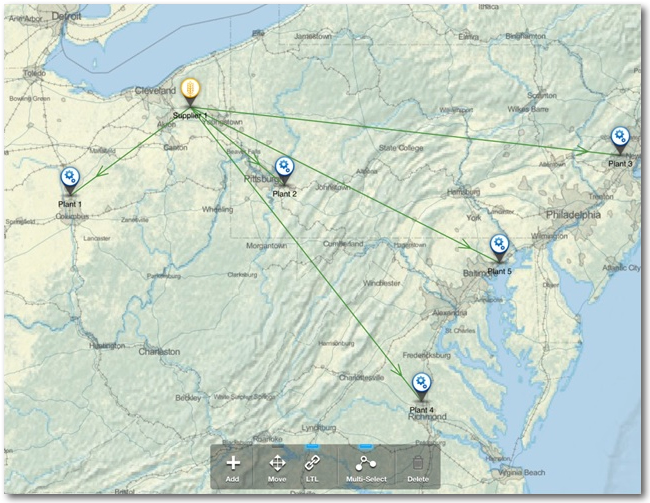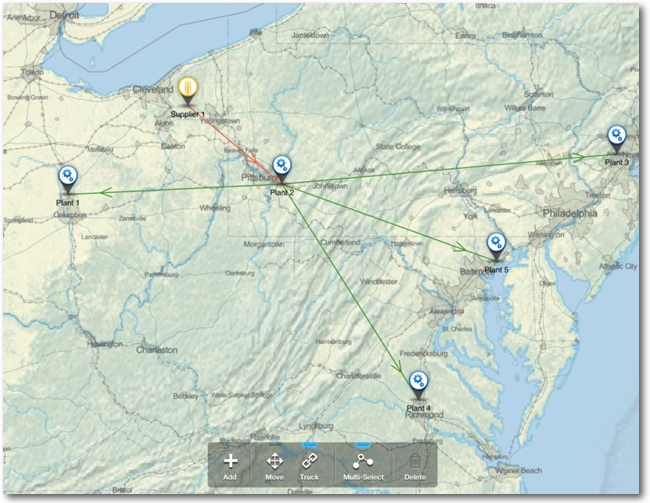Uncover Hidden Cost Savings in Your Supply Chain
Much like that money in your coat, there are numerous supply chain cost saving opportunities that are hidden just below the surface at most companies, and you can utilize supply chain modeling technology to uncover that money.
Is there anything better than putting on last year’s jacket and finding money in the pocket? The money was right there, but hidden just below the surface of that coat pocket.
There are a few things that make this “found money” so great: it’s fast – you just reached into your pocket and there it was in your hand. It’s easy—you didn’t have to toil away for long hours to earn it. Finally, it’s unexpected—you hadn’t planned on having that extra cash when you started the day.
Much like that money in your coat, there are numerous supply chain cost saving opportunities that are hidden just below the surface at most companies, and you can utilize supply chain modeling technology to uncover that money.
There are four key modeling techniques used by many leading companies to “find” money in the supply chain:
1. Product flow-path optimization
2. Production footprint analysis
3. Demand segmentation and inventory right-sizing
4. Transportation route optimization
Each of these techniques can deliver the same fast, easy and unexpected benefits. They are fast in that they do not require years to implement. They are easy because they do not require major structural changes to the supply chain. Finally, they are unexpected because modeling technology often uncovers solutions that contradict intuition or legacy business practice.
Product Flow-Path Optimization
The process of moving your products from supply through production and eventually distributing them out to customers or stores presents a myriad of choices. The collective set of these choices make up a product’s flow-path through the supply chain. Modeling these flows can provide you with a total landed cost or total cost-to-serve for each product. Modeling all the alternative flow options and using smart algorithms to determine the best choice is called product flow-path optimization.
Before Product Flow-Path Optimization

After Product Flow-Path Optimization

Demand Segmentation and Inventory Right-Sizing
One of the biggest sources of variability in the supply chain is demand, and demand can be highly unpredictable. Despite the fact that there are many widely-varying demand patterns, most inventory optimization tools assume that all demand is “normal,” leading to either too much inventory or stock-outs and lost sales. Multi-echelon inventory optimization determines how much inventory must be kept at each level and location in the supply chain to deliver the desired service level at the lowest cost. This analysis includes the inherent supply chain variability on both the demand side and the supply side to identify the lowest total cost inventory stocking solution that meets the service requirements for each product/site combination.
Production Footprint Analysis
Put simply, the “footprint” represents the physical facility and quantity in which each product is manufactured, along with the capacity required to make it happen. Oftentimes demand for products shifts over time to new regions or different quantities, and suppliers and cost structures change as well. As these changes occur, the production footprint should also change to keep in-sync. This may mean investing in additional capacity in certain locations or perhaps completely moving production capacity to other facilities within the network. Modeling the production footprint and analyzing varying scenarios helps a company balance existing capacity with the investment required to add additional production.
Transportation Route Optimization
Transportation route optimization can be done alone or in conjunction with either supply chain optimization or simulation. Using advanced algorithms, transportation routes are defined to minimize the cost of inbound or outbound shipments, while considering realistic cost and constraint structures. This helps answer the questions, “What’s going to happen to our transportation routes when the network design is changed?” or “Could there be a more efficient way to get our product from the manufacturer to the customer?”
Modeling technology can uncover millions of dollars in supply chain savings just by optimizing existing assets and processes. Often simply visualizing existing supply chain structure and flows can reveal hidden inefficiencies and present opportunities for further analysis and optimization.
So the question is: how much “hidden” money might be found in your company’s supply chain?
Editors Note: Toby Brzoznowski is the Executive Vice President of LLamasoft, Inc. Toby has over 20 years of experience in building and growing businesses, focused on process improvement and analysis technologies. His expertise has been applied to bringing new and advanced technologies into mainstream use at global Fortune 500 businesses. In the last decade, Toby has been involved in the start-up of three technology companies. He is a graduate of the University of Michigan and a frequent presenter at supply chain and strategic sourcing events.
Article Topics
LLamasoft News & Resources
Talking Supply Chain: The Truth About Digital Twins Coupa brings LLamasoft into the fold in $1.5 billion acquisition Coupa Acquires AI-Powered Supply Chain Design & Planning Leader LLamasoft for $1.5 billion Smoother execution through S&OP A Fresh Take on Supply Chain Innovation Nine Ways Food and Beverage Companies Can Use Supply Chain Design to Drive Competitive Advantage Brexit, the Next Big Disruption for the Supply Chain? More LLamasoftLatest in Technology
Spotlight Startup: Cart.com is Reimagining Logistics Walmart and Swisslog Expand Partnership with New Texas Facility Taking Stock of Today’s Robotics Market and What the Future Holds Biden Gives Samsung $6.4 Billion For Texas Semiconductor Plants Apple Overtaken as World’s Largest Phone Seller Walmart Unleashes Autonomous Lift Trucks at Four High-Tech DCs Talking Supply Chain: Procurement and the AI revolution More Technology













